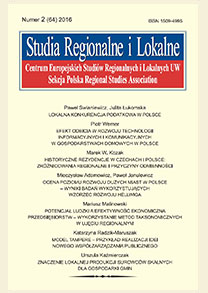Codzienne dojazdy do pracy jako ekonomiczne kryterium rządowych klasyfikacji i delimitacji obszarów (na przykładzie USA i Kanady)
Commuting as an economic criterion of categorization and delimitation of areas (examples of US and Canadian governmental classifications)
Author(s): Joanna RakowskaSubject(s): Essay|Book Review |Scientific Life
Published by: EUROREG - Uniwersytet Warszawski, Regional Studies Association - Sekcja Polska
Keywords: functional linkages; commuting to work; classifications (typologies) of areas
Summary/Abstract: The paper discusses the role of commuting as one of the main indicators of functional linkages and a criterion used in governmental classifications and delimitations of areas, e.g. in the US Metro and Non-metro Classification by US OMB, in the Canadian Census classification, and the ‘Rural and Small Town’ classification. The above methods are presented in the light of selected research findings on the social and economic phenomena which, as either a reason for or a result of commuting, justify the use of the three main parameters, i.e. direction, catchment areas, and intensity, as tools of classification and delimitation of areas.
Journal: Studia Regionalne i Lokalne
- Issue Year: 15/2014
- Issue No: 57
- Page Range: 46-59
- Page Count: 14
- Language: Polish

